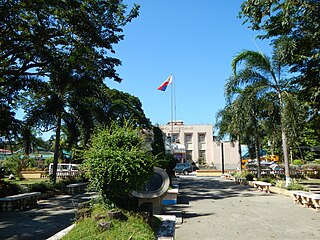
Apalit, officially the Municipality of Apalit, is a first-class municipality in the province of Pampanga, Philippines. According to the 2020 census, it has a population of 117,160 people.

San Fernando, officially the City of San Fernando, is a 1st class component city and capital of the province of Pampanga, Philippines. According to the 2020 census, it has a population of 354,666 people.

Magalang, officially the Municipality of Magalang, is a 1st class municipality in the province of Pampanga, Philippines. According to the 2020 census, it has a population of 124,188 people.

Mexico, officially the Municipality of Mexico, is a 1st class municipality in the province of Pampanga, the Philippines. According to the 2020 census, it has a population of 173,403 people. It was also formerly known as Nuevo México during the Spanish period.

Pedro Abad Santos y Basco was a Filipino Marxist politician. He founded the Partido Sosyalista ng Pilipinas (PSP) or Philippine Socialist Party in 1932. He ran for several local elections but never won. He also ran for president in the 1941 Philippine presidential election, but later withdrew, weeks before the election. Luis Taruc of the Hukbalahap Rebellion was under his tutelage and was his right-hand man.

The Hizon-Singian House is a Bahay na Bato heritage house located in the City of San Fernando, Pampanga. Built in 1870 by the couple Don Anacleto Hizon, gobernadorcillo of San Fernando from 1877-1879 and 1886-1887, and Victoria Singian de Miranda y de Ocampo. Inherited by their daughter Victoria Hizon y Singian who was married to Godofredo Rodriguez y Yabut from Bacolor. It was occupied during the 1896 revolution by Spanish General Antonio Ruiz Serralde, appropriated by the Japanese Imperial Army to serve as a military hospital and barracks from 1943 to 1944, and served as headquarters of American General Walter Krueger of the 6th American Army during the liberation period until the end of 1945. Inherited by their son, the late Gerry Catalino Rodriguez Y Hizon, former president of the Pampanga Sugar Development Company (PASUDECO), who was married to Aurora Angeles. This bahay na bato of the Spanish colonial period was declared a Heritage House by the National Historical Institute on 27 January 2003 by virtue of Resolution No. 4, S. 2003.
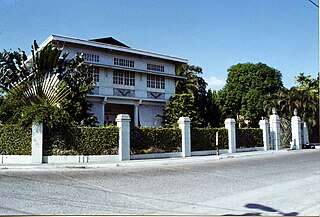
The Lazatin House is one of the two heritage houses owned by the Lazatin family in the City of San Fernando, Pampanga province in the Philippines.
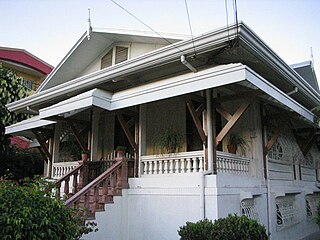
The Dayrit-Cuyugan House is a Bahay na Bato heritage house in the City of San Fernando, in the province of Pampanga, Philippines. This ancestral house, which exemplifies the architecture prevalent during the American colonial period was declared a Heritage House by the National Historical Institute on 27 January 2003 by virtue of Resolution No. 5, S. 2003.
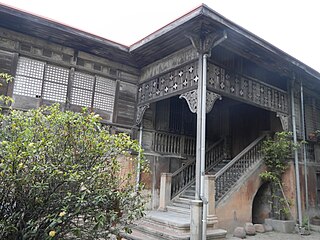
The Hizon-Ocampo House is a heritage house in the City of San Fernando, Pampanga. It is located on A. Consunji Street in Barangay Santo Rosario.
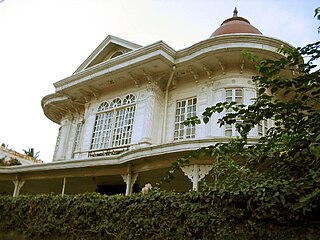
The Augusto P. Hizon House is a heritage house in the City of San Fernando in the Pampanga province of the Philippines. The house is located along Consunji Street in the city.

The City Hall of San Fernando, Pampanga, commonly referred to as Municipio de San Fernando, is a heritage building of the City of San Fernando, Pampanga province, Philippines.

Nicolasa Dayrit-Panlilio was a Filipina non-combatant in the Philippine–American War. Her actions not only included helping to minister the sick and wounded Filipino combatants, but also played a major role in appeasing General Antonio Luna during his confrontation with General Tomas Mascardo. This contributed to the collapse of the Bagbag-Quingua-Sta. Maria defense line based on the Pampanga River, which was held against the American forces.

Eduardo "Among Ed" Tongol Panlilio is a Filipino former Roman Catholic priest and Governor of Pampanga from 2007 to 2010. He was suspended from his priestly duties upon announcing his intention to run as governor. He was elected governor in May 2007 in a three-way race against incumbent governor Mark Lapid and provincial board member Lilia Pineda. In February 2010, following a recount of votes due to an election protest, the Comelec ruled that Lilia Pineda had won the 2007 election over Panlilio.

Juan Felipe de Jesús Nakpil, KGCR, KSS known as Juan Nakpil, was a Filipino architect, teacher and a community leader. In 1973, he was named one of the National Artists for architecture. He was regarded as the Dean of Filipino Architects.

Ancestral houses of the Philippines or Heritage Houses are homes owned and preserved by the same family for several generations as part of the Filipino family culture. It corresponds to long tradition by Filipino people of giving reverence for ancestors and elders. Houses could be a simple house to a mansion. The most common ones are the "Bahay na Bato". Some houses of prominent families had become points of interest or museums in their community because of its cultural, architectural or historical significance. These houses that are deemed of significant importance to the Filipino culture are declared Heritage House by the National Historical Commission of the Philippines (NHCP), previously known as the National Historical Institute (NHI) of the Philippines. Preservation is of utmost importance as some ancestral houses have come into danger due to business people who buy old houses in the provinces, dismantle them then sell the parts as ancestral building materials for homeowners wishing to have the ancestral ambiance on their houses. These ancestral houses provide the current generation a look back of the country's colonial past through these old houses.

Pablo Ángeles David was a Filipino magistrate, statesman, and politician. During his career, he became a judge, a member of the Philippine House of Representatives, Governor of Pampanga, and a member of the Senate of the Philippines.
The mayor of San Fernando is the head of the local government of the city of San Fernando City, Pampanga who is elected to three year terms. The Mayor is also the executive head and leads the city's departments in executing the city ordinances and improving public services. The city mayor is restricted to three consecutive terms, totaling nine years, although a mayor can be elected again after an interruption of one term.

The Mayor of Angeles City is the head of the local government of the city of Angeles in Pampanga, Philippines who is elected to three year terms. The Mayor is also the executive head and leads the city's departments in executing the city ordinances and improving public services. The city mayor is restricted to three consecutive terms, totaling nine years, although a mayor can be elected again after an interruption of one term.
The majority of the Chinese diaspora in the Philippines is made up of Fujianese descent, with a small percentage of Cantonese from Guangdong and Hong Kong. During the Spanish period, many Chinese from Fujian were enticed by the Galleon Trade, which was one of the main reasons for the influx of Chinese in the Philippines. Those who converted to Catholicism were placed in Binondo, and those who did not were in Parian. Having a Hispanized Filipino-Chinese surname signifies that a Chinese person has become Catholic. Some adopted the surnames of their Spanish godparents, while others combined modified Chinese names and added honorifics such as -co, -son, and -zon at the end. Many of them intermarried with Filipinos and were integrated into Philippine society. Filipinos who possess those surnames have Chinese lineage.

















